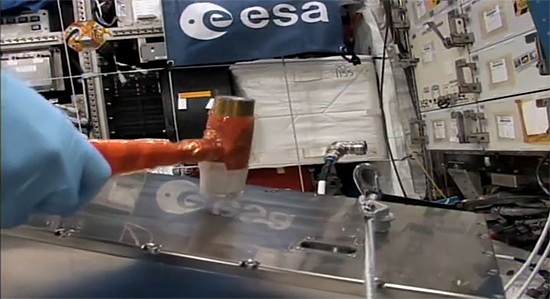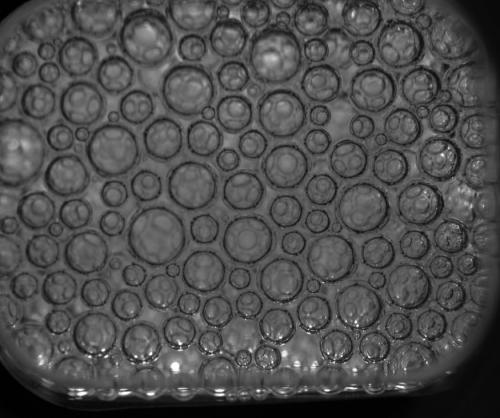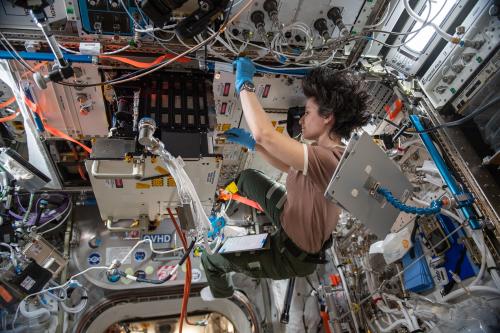After the end of a successful RUBI-X mission, the corresponding Experiment Container (EC) was removed in favor of the Soft Matter Dynamics (SMD) EC on January 26 2021. Simultaneously, four Compacted Granular (CompGran) samples were put inside the EC’s Moving Tray, signaling the start of the CompGran-2 mission.
A hopeful start
A CompGran Sample consists of a cell containing a moveable piston and piezo elements, filled with granular matter. Collision makes the particles lose energy which, under normal gravitational circumstances, is accompanied by their quick sedimentation.
In microgravity, however, it is possible to study the loss of particle energy decoupled from the sedimentation process. By compressing the granular matter with the piston and activating the piezo, different observational conditions are created. On June 11, the CompGran samples were exchanged for several Foam Coarsening (Foam-C) samples, marking the end of a successful 4.5-month mission.
The objective of Foam-C is the study of the coarsening of foams as a function of the liquid fraction. The coarsening in foams is the evolution of the structure due to gas diffusion from smaller to larger bubbles, until the smaller bubbles disappear, changing the properties of the foam. The investigation focuses on very wet foams that cannot be studied on ground, due to gravity's drainage effect.
Multiple light scattering measurements using a laser provide measurements of the bubble structure and dynamics during coarsening.
Stop, Hammer Time!
During the Foam-C experiment, some issues came up regarding the operational laser, and more likely the laser shutter, inside the EC. After consulting with the Payload Developer, it was decided to try to get the shutter unstuck again by having ESA astronaut Thomas Pesquet hammering the EC (.mp4). Unfortunately, the issues persisted.
As the laser is a paramount part of the science equipment, the B.USOC Engineering Model of the SMD EC was shipped to Germany to be refurbished and used as replacement for the faulty EC onboard the ISS.
SMD continued
On February 28 2022, the ISS crew installed the replacement SMD EC together with ‘PASTA’ samples containing emulsions of water, oil and a stabilizing additive.
On ground, coalescence of the liquid droplets is coupled with the segregation of the two different liquids, where the densest one will gather on the bottom. Microgravity conditions allow investigation of emulsion destabilization under the sole effect of coalescence.
Five months later, new Foam-C samples were installed for a third campaign.



